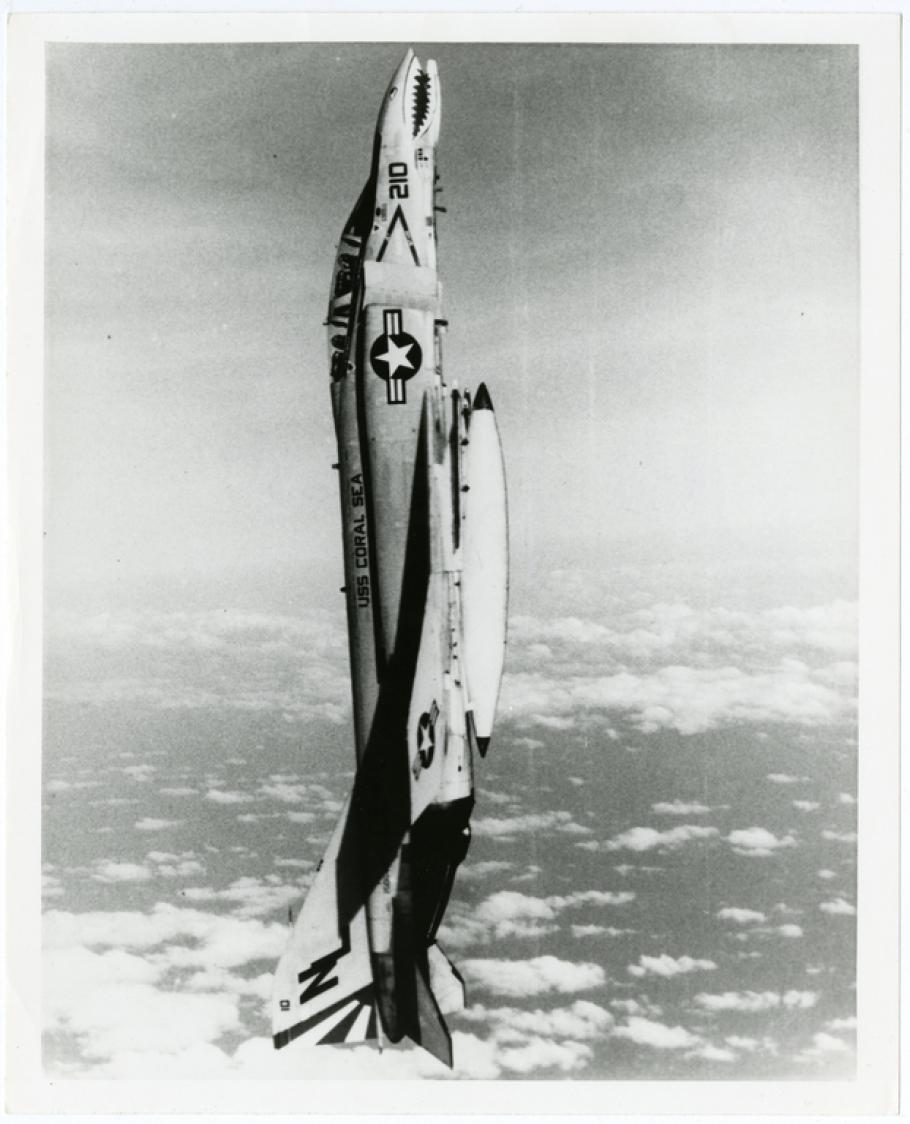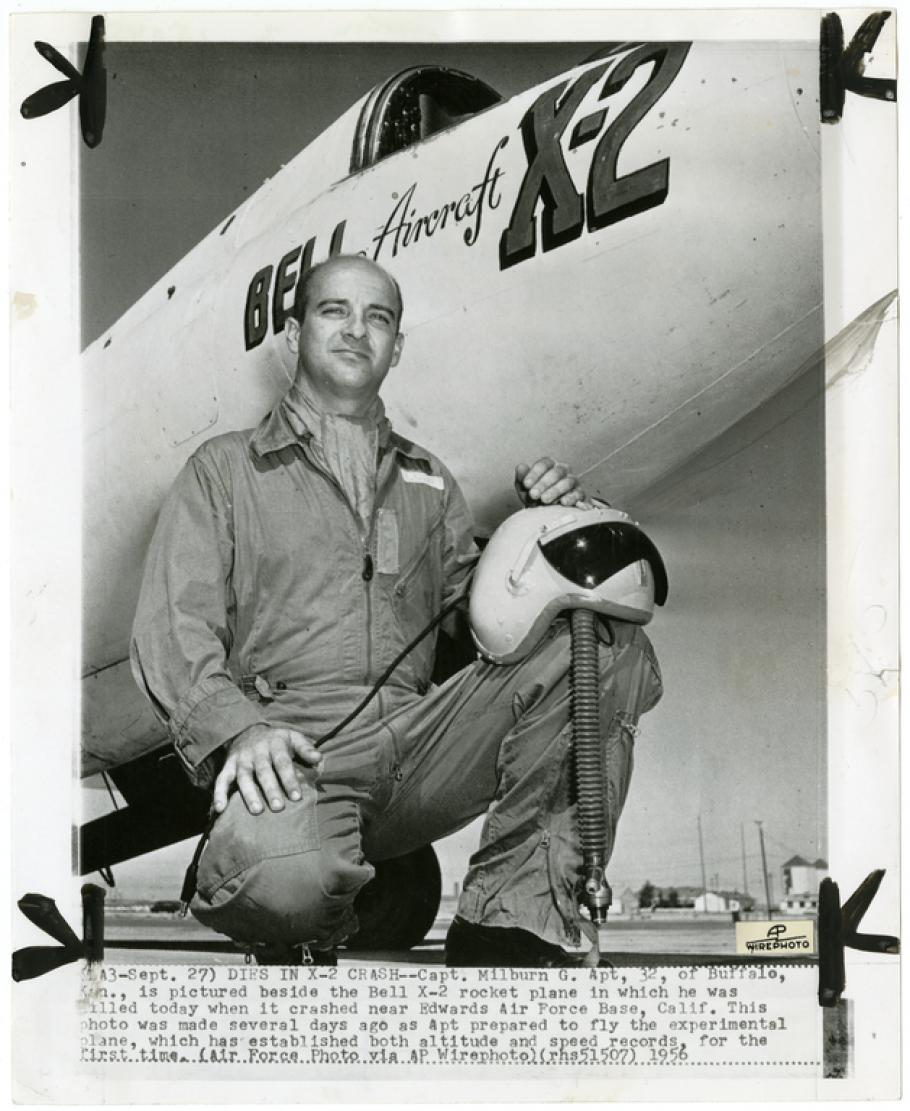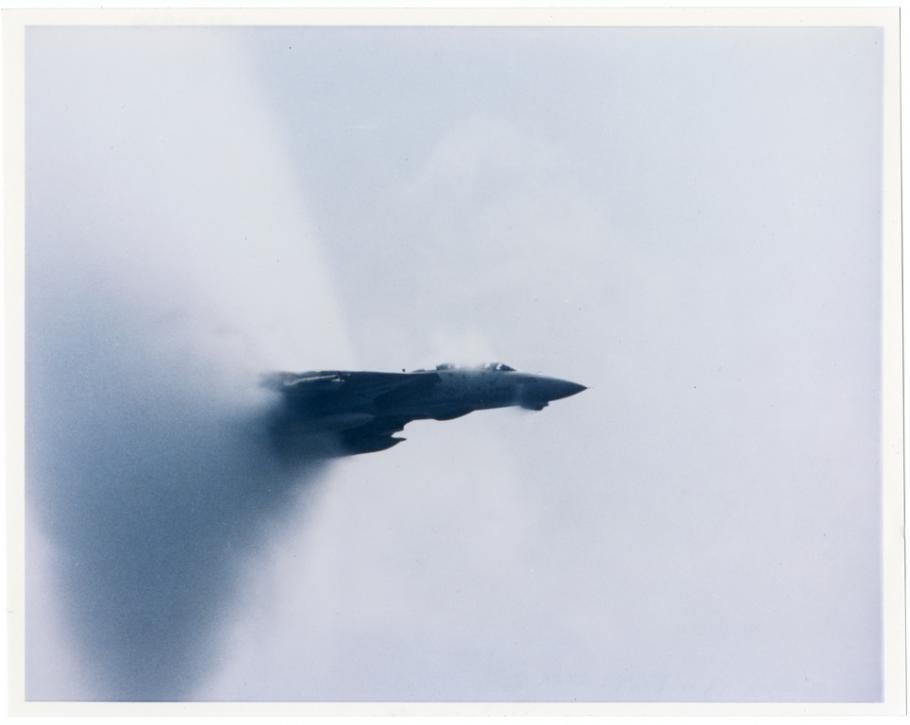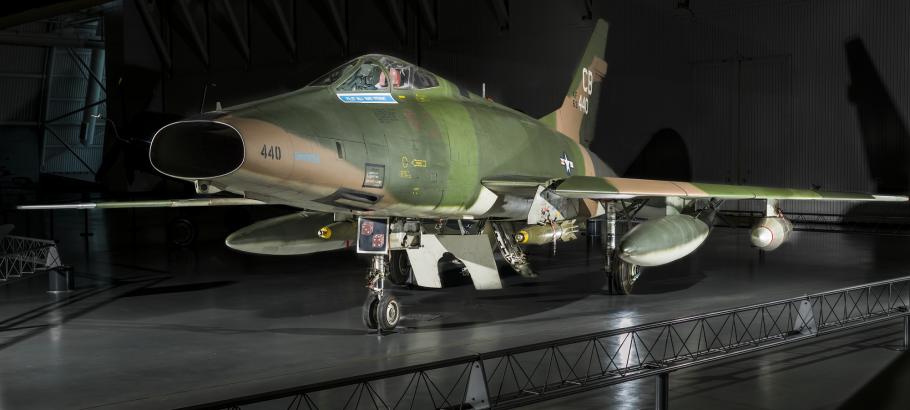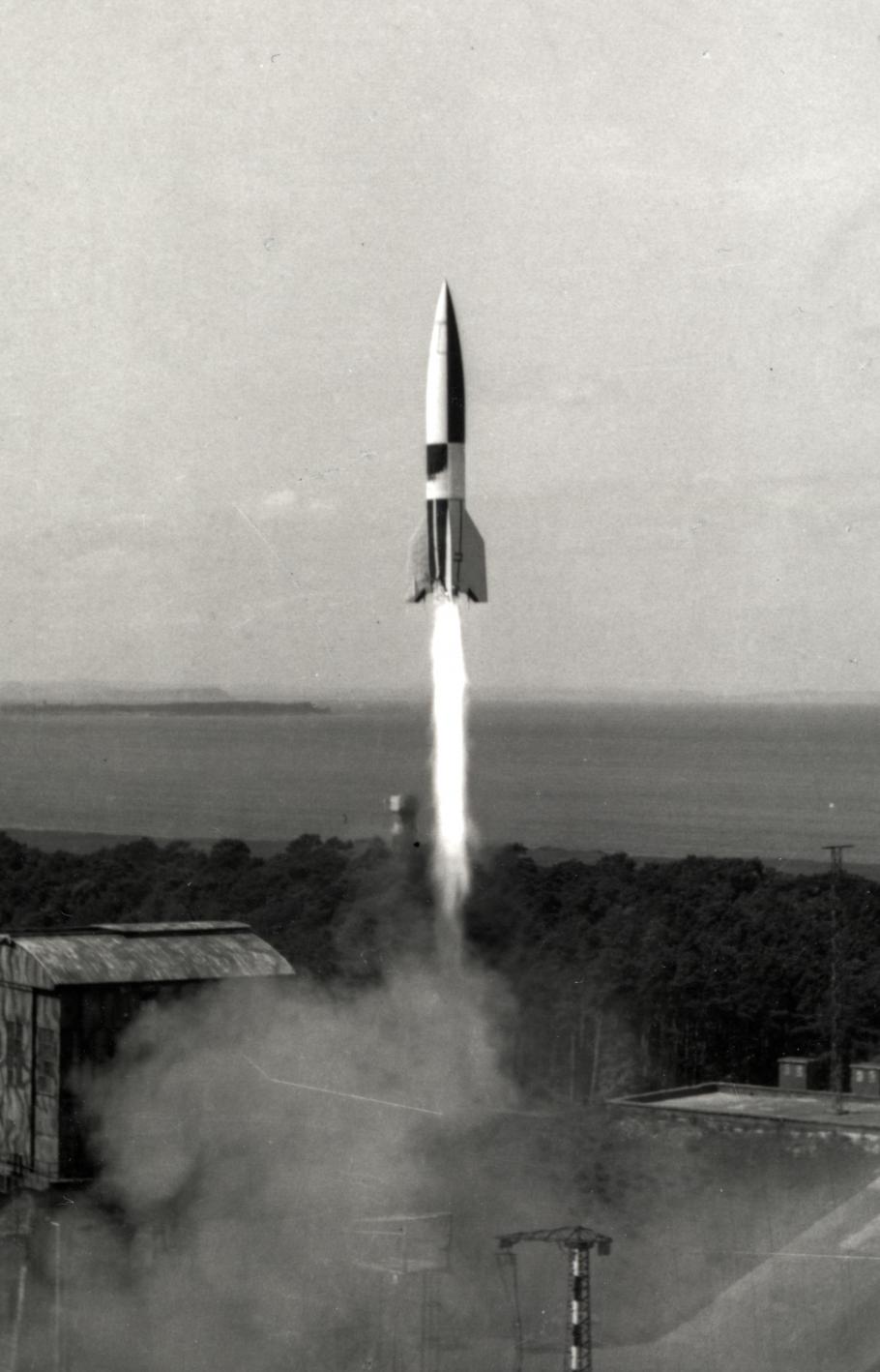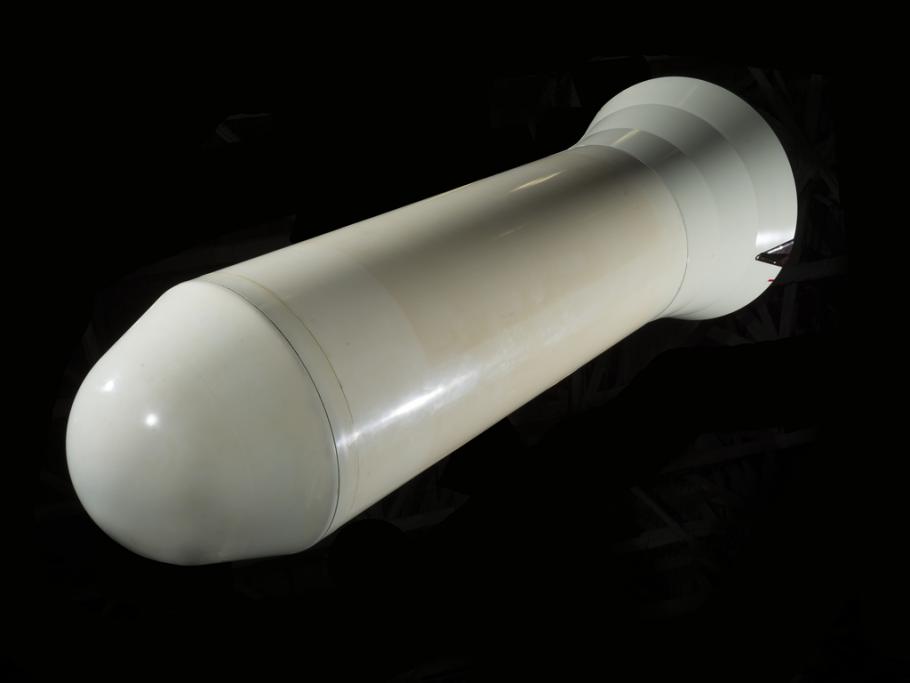For nearly 50 years after World War II, the United States and the Soviet Union waged the Cold War—locked in a state of political and military tension. No large-scale wars erupted during this period, but speed played a pivotal role.
Speed was center of both countries’ Cold War strategies. Both nations raced to stay ahead of the other through massive buildups of conventional and nuclear weapons. Speed also played a part in the new technology produced during the Cold War. Two major breakthroughs occurred during these decades: high-speed jet aircraft and the intercontinental ballistic missile (ICBM). Both of these technologies transformed warfare and the lives of people across the globe.
Researching Speed
During the Cold War, the United States was determined to eclipse the Soviet Union’s superiority in number. In the late 1940s military and civilian researchers created a new generation of high-speed aircraft that served as flying laboratories over California’s Edwards Air Force Base. After test pilot Chuck Yeager’s Bell X-1 achieved the first supersonic flight in October 1947, other test pilots went on to push the envelope of high-speed flight even further with aircraft the like Bell X-2 and X-15.
The Bell X-2 was a collaboration between Bell Aircraft, the U.S. Air Force, and the National Advisory Committee for Aeronautics (NACA). The aircraft investigated flight two to three times the speed of sound (Mach 2-Mach3). Test pilot Lt. Col. Frank “Pete” Everest reached Mach 2.8 in July 1956. The X-2 made 10 powered flights and reached Mach 3.2 before the program ended in 1956.
The X-15 high-speed flight research program (1959-1968) was NASA’s most successful. It investigated hypersonic flight (five or more times the speed of sound) at altitudes reaching the fringes of space. In one flight, an X-15 flew 67 miles (108 km) above the earth at a speed of Mach 6.7, or 4,534 mph (7,296 hm/h), making it a true “aerospace” plane.
The Jet Engine
America’s resolve during the Cold War spurred innovations in military aircraft and preparedness. A new generation of high-speed reconnaissance and fighter aircraft took shape to fly higher, faster, and farther. America developed faster aerodynamic designs and a new form of propulsion which enabled supersonic flight: the jet engine.
In the name of national defense, the military, aerospace industry, and government and university research organizations worked together to an extent previously unknown. They improved crew survival and kept pushing the envelope on aircraft research and design.
In 1953, the North American F-100 Super Sabre became the first airplane capable of supersonic speeds in level flight (not in a dive). The Century Series supersonic fighters, which the F-100 Super Sabre was a part of, were the epitome of high-speed aircraft design during the Cold War years of the 1950s and 1960s.
Clarence L. “Kelly” Johnson was one of the foremost aircraft designers of the 20th century. His remarkable career at the Lockheed Aircraft Corporation spanned from the aeronautical revolution of the 1930s to the Cold War. His designed included the Mach 2 F-104 Starfighter interceptor and perhaps one of the most recognizable aircraft in aviation history: the Mach 3 SR-71 high-altitude reconnaissance aircraft.
First flown in 1964, the Lockheed SR-71 Blackbird flew higher and faster than any Soviet fighter or missile. It is the fastest piloted aircraft in history with jet engines. Cruising at Mach 3, it reached altitudes above 85,000 feet (26 kilometers), near the upper edge of Earth’s atmosphere. The Blackbird also set a speed record, averaging 2,124 mph (3,418 km/h) from Los Angeles to Washington, DC, when it was delivered to the Smithsonian to become a part of the National Air and Space Museum’s collection in 1990. The flight took only one hour, four minutes, and 20 seconds. The Blackbird remained a valuable reconnaissance aircraft until the late 1990s.
The reduced oxygen and low air pressure caused by the high altitude at which the Blackbird flew is fatal. Low air pressure causes oxygen to escape from the bloodstream and the lungs can’t expand. As a result, the crew wore full-pressure suits to survive in the event of a catastrophic failure. In the photo below, notice the metal rings at the neck and wrists of the pressure suit. With the helmet and gloves locked to these rings, the suit provides the pilot with a pressurized environment.
In the wake of the Vietnam War, emphasis on speed diminished. In the new generation or fighter-bombers, maneuverability and multirole capability became as important as speed.
Intercontinental Ballistic Missiles (ICBMs)
Intercontinental Ballistic Missiles, or ICBMs, completely changed the nature of warfare because they could deliver nuclear warheads over very long distances. Oceans no longer acted as barriers to foreign aggressors.
In comparison the infamous B-29 Enola Gay which dropped the first atomic weapon used in combat, had a cruising speed of 220 mph (354 km/h), and flew 1,500 miles (2,414 km/h) in approximately six hours. The speed at which ICBMs traveled meant they could cover the same distance in only a few minutes, making nuclear war immediate and total. As a result, civil defense signs marking designated public buildings as fallout shelters, “duck and cover” drills preparing school children for nuclear attack, and homebuilt fallout shelters became more commonplace.
Germany introduced the world’s first operational ballistic missile, called the V-2, during World War II.
The Titan I, which entered service in the early 1960s after nearly a decade of development, was the United States’ first multi-stage ICBM. It could travel 5,500 nautical miles (6,330 miles/10,187 kilometers) at 21 times the speed of sound.
When an ICBM is launched, a booster lifts the missile high enough to leave the Earth’s atmosphere. Its purpose complete, the booster falls away. The reentry vehicle, which carries the warhead, returns through the atmosphere on a parabolic trajectory to the target.
The Titan I’s first, or booster, stage sat atop a two-chamber, liquid-fuel engine that produced 300,000 pounds (1334.5 kilonewtons) of thrust at liftoff. After the initial ascent, the smaller, single-chamber, second-stage engine took over to keep the Mark 4 reentry vehicle on its trajectory.
The destructive power of ICBMs increased dramatically during the Cold War. The Titan I carried only one warhead. Entering service in 1986, the LGM-118 Peacekeeper carried up to 10 and remained in service for nearly 20 years.
Speed was at the center of the Cold War—both in the Soviet Union and the United States race to beat each other in the latest feats of technology, and in the technology itself. This need for speed that drove the Cold War would change the lives of people around the world for decades to come.

